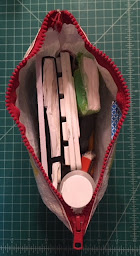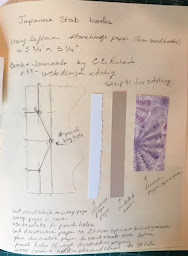I have 2 watercolor journaling kits. The small kit is designed to carry everywhere; meetings, museums, gardens, restaurants, and traveling by boat, trains or planes. It contains the minimum items I need for painting:
- Paper Mate Sharpwriter mechanical pencil
- One black fine tip permanent ink pens
- Set of water brushes (3 round and 1 flat)
- Artists erasers (Factis Artists eraser or Prismacolor kneaded eraser)
- 2 oz dropper bottle
- Kleenex packet
- Small watercolor journal or block (a Moleskin watercolor notebook and watercolor block of postcards are in the photo below)
- Watercolor travel kit with professional paints (a Van Gough Watercolor Pocket Box is in the photo below)
- Waterproof clutch I found at the Frist Art Museum in Nashville several years ago.
My large watercolor kit I use for sketch crawls, weekend trips and hiking.
- All the items listed above for the small kit
- 2 oz spray bottle
- Several Kleenex packets
- One Copic sepia fine tip permanent ink pen
- 6" plastic ruler
- 6" plastic triangle
- X-Acto retractable knife
- Clear wax crayon
- Guerrilla painter composition finder
- Gray scale and value finder
- Spiral bound Strathmore visual journals
In addition to the what is needed to paint, this larger kit has space for a water bottle, snack, sunglasses and a hat. If I will be out in the sun for a long time I also take a three legged folding chair and a portable shade umbrella.
I purchase many supplies from local art stores, but I also shop on line with the following venders:


















